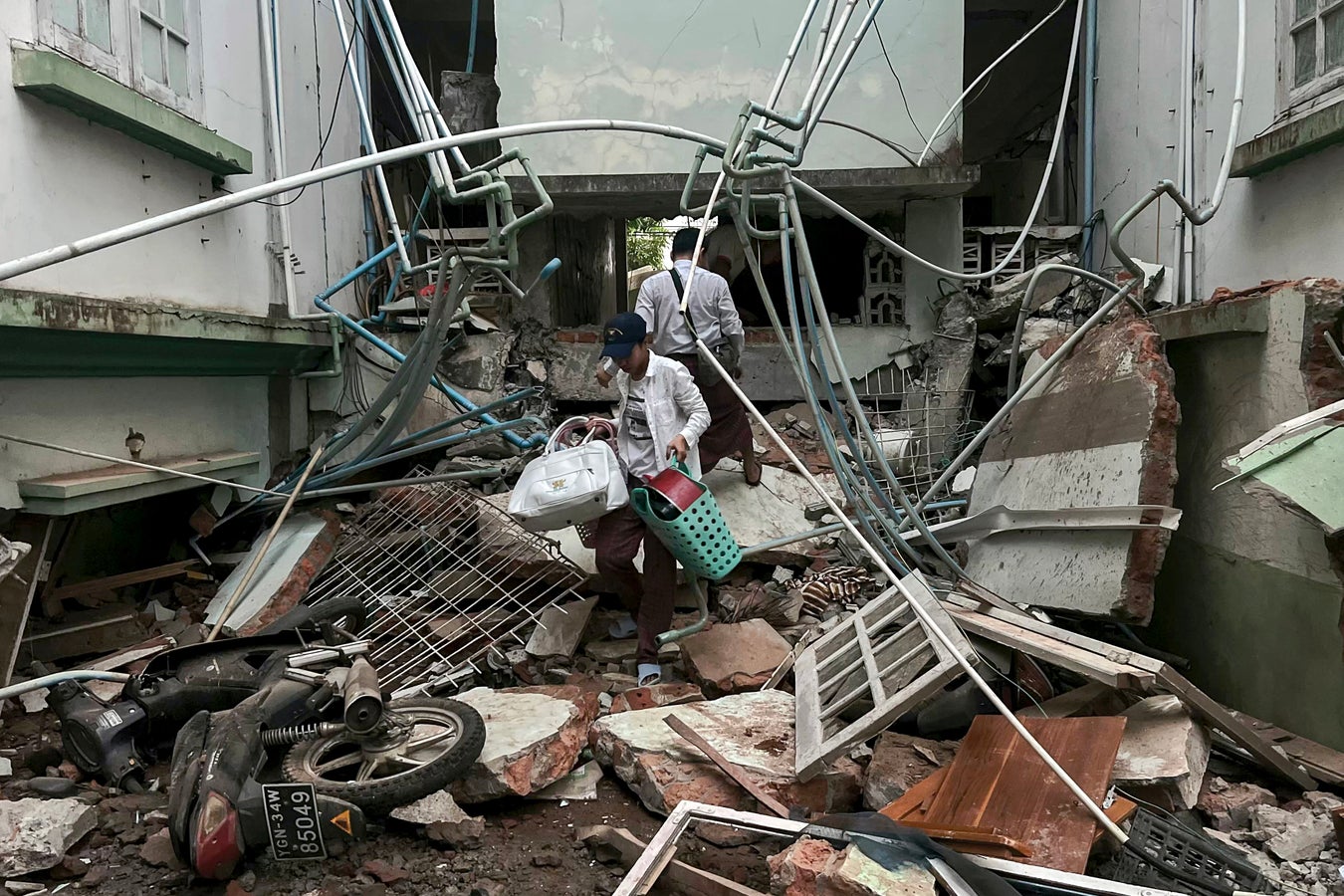 On March 28, at around midday local time, tens of millions of people in Southeast Asia felt the earth below their feet violently rupture. A magnitude 7.7 earthquake, centered just 12 miles away from Mandalay, Myanmar, shook the region—causing streets to buckle, ancient pagodas to crumble, bridges to shatter and houses to collapse. Entire neighborhoods were devastated in a matter of seconds.
On March 28, at around midday local time, tens of millions of people in Southeast Asia felt the earth below their feet violently rupture. A magnitude 7.7 earthquake, centered just 12 miles away from Mandalay, Myanmar, shook the region—causing streets to buckle, ancient pagodas to crumble, bridges to shatter and houses to collapse. Entire neighborhoods were devastated in a matter of seconds.
The earthquake’s energy release was comparable to that of several hundred nuclear weapon explosions. “The magnitude of this event was so high that it was felt in neighboring countries,” says Amilcar Carrera-Cevallos, an earthquake scientist at the Vicente Rocafuerte Secular University of Guayaquil in Ecuador. A 30-story skyscraper under construction in Bangkok—600 miles from the quake’s epicenter—disintegrated. According to estimates by the U.S. Geological Survey, there will be thousands, if not tens of thousands, of casualties, as well as tens of billions of dollars of economic damage.
Many factors conspired to make this earthquake a disaster, including a lack of quake-proofing measures in buildings across the region. Few of the structures could withstand this monster of a temblor, which was “a really big, shallow earthquake”—meaning it occurred relatively close to the Earth’s surface, says Judith Hubbard, an earthquake scientist at Cornell University.
